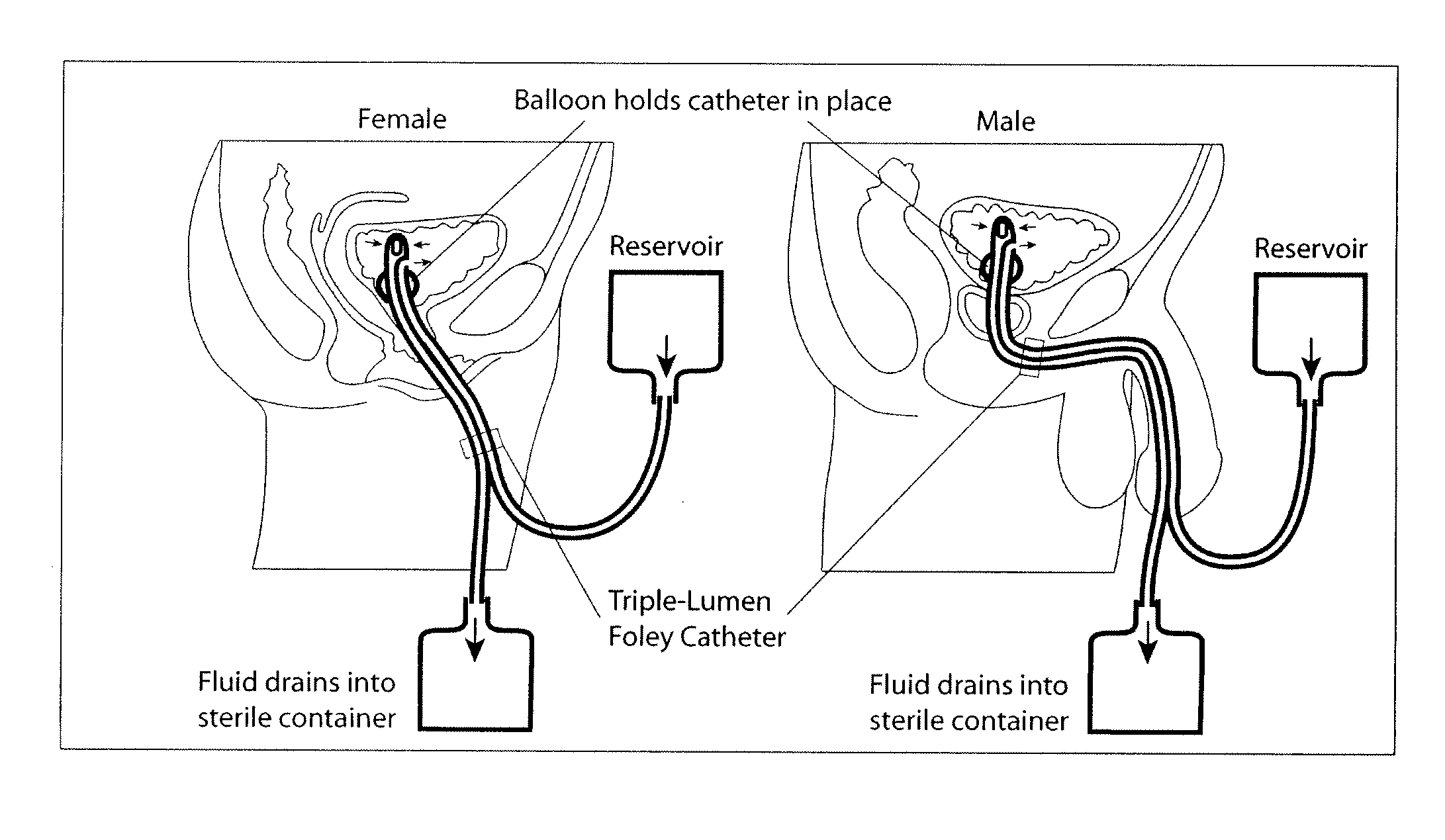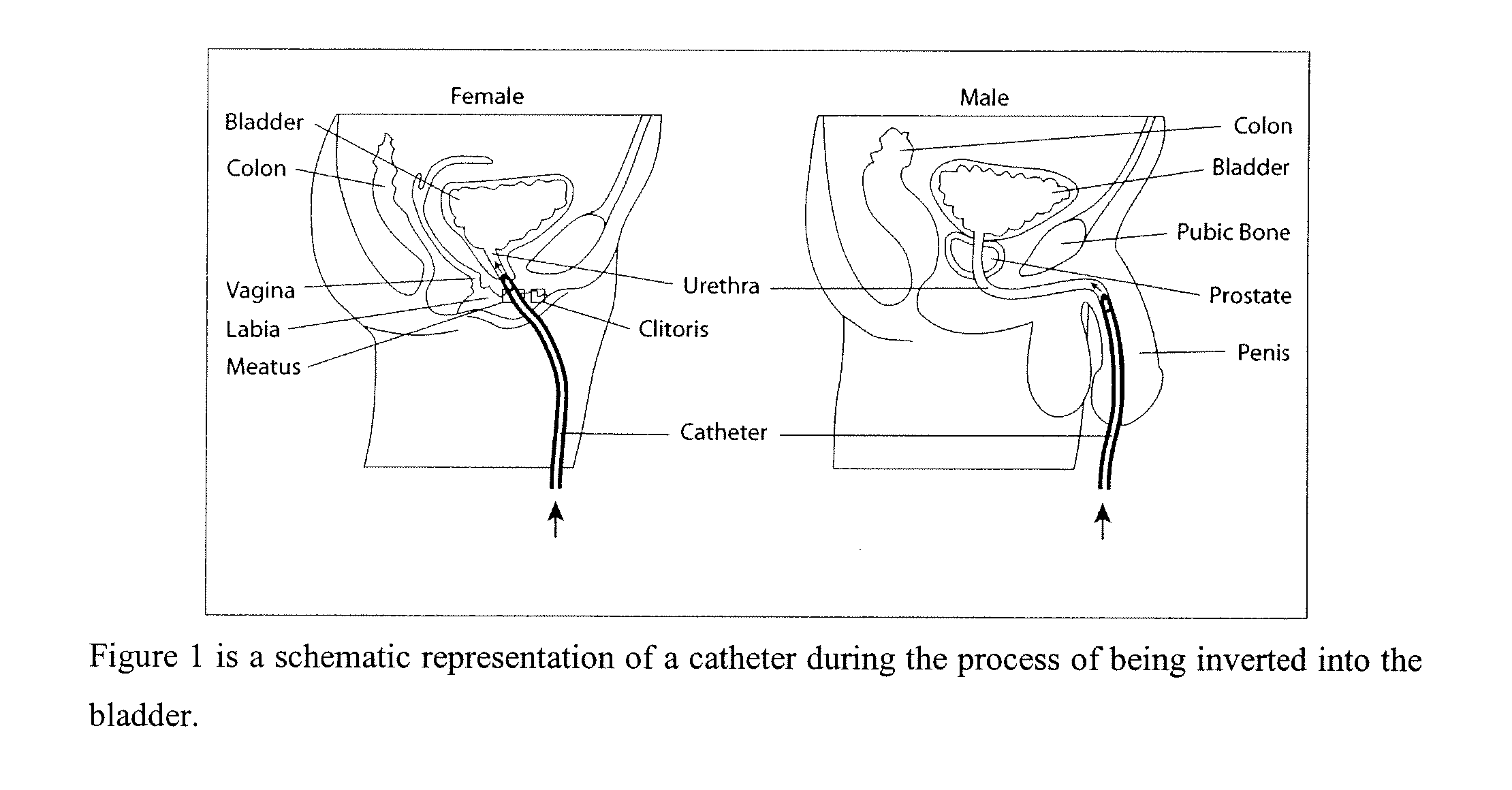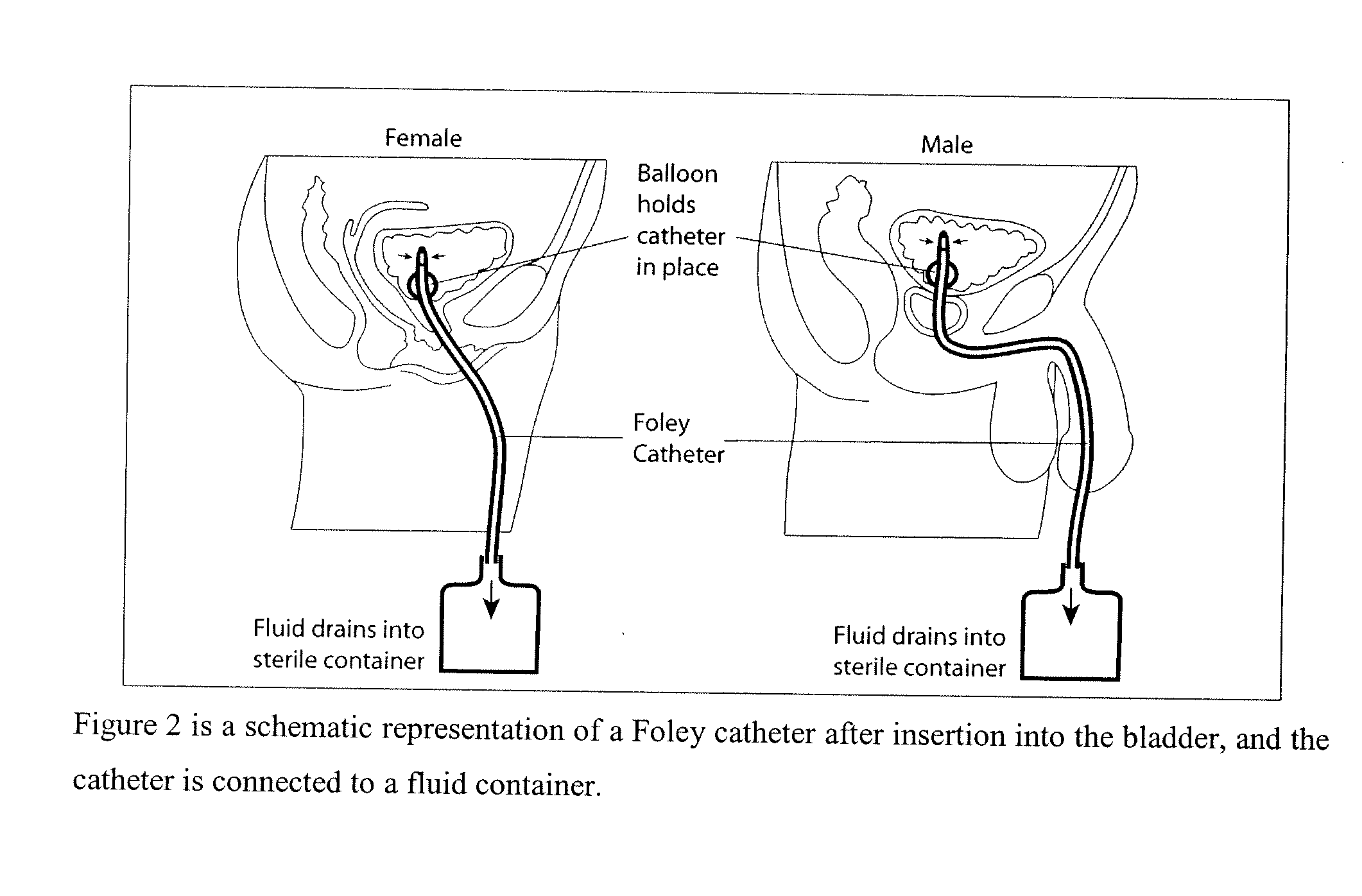System and method for the prevention of bacterial and fungal infections including Urinary Tract Infections (UTI) using N-halogenated amino acids
- Summary
- Abstract
- Description
- Claims
- Application Information
AI Technical Summary
Benefits of technology
Problems solved by technology
Method used
Image
Examples
example 1
Representative Compositions for Use with a Catheter Include
Composition A:
[0154] 33 mM N,N-dichloro 2,2-dimethyl taurine [0155] 0.9% NaCl [0156] pH 4
Composition B [0157] 33 mM N,N-dichloro 2,2-dimethyl taurine [0158] 0.4% NaCl [0159] pH 4
Composition C: [0160] 33 mM N,N-dichloro 2,2-dimethyl taurine [0161] 0.9% NaCl [0162] pH 3.5
Composition D: [0163] 20 mM N,N-dichloro 2,2-dimethyl taurine [0164] 0.9% NaCl [0165] pH 2
Composition E: [0166] 50 mM N,N-dichloro 2,2-dimethyl taurine [0167] 0.9% NaCl [0168] pH 5 [0169] 15 mM malic acid
Composition F: [0170] 100 mM N,N-dichloro 2,2-dimethyl taurine [0171] 0.9% NaCl [0172] pH 7 [0173] 20 mM phosphate [0174] 20 mM malic acid
Composition G [0175] 100 mM N-chlorotaurine [0176] 0.9% NaCl [0177] 20 mM total sodium phosphate buffer [0178] pH 7.5
Composition H [0179] 40 mM N,N-dichlorotaurine [0180] 20 mM HOCl [0181] 0.9% NaCl [0182] 10 mM acetic acid-sodium acetate (pH 4)
Composition I [0183] 40 mM N,N-dichloro 2,2-dimethyl taurine [...
example 2
Inserting a Catheter through the Urethra in Women and Men
[0188] The following is a description of a general procedure for inserting a catheter and for using the antimicrobial composition. Assuming that a person skilled in the art is proficient in sterile techniques and in working with catheters, including dealing with obstructions and knowing when to call a physician, nurse or medical specialist for assistance, only those steps relevant to this invention are described. The other steps of the procedure (for example, hand cleansing or sanitization, lubrication of the catheter, inflating the balloon of the catheter once the catheter is in place), safeguards (for example, the use of sterile gloves and how to use them), instructions to the treated patient (for example, breathing or relaxation instructions) are familiar to physicians or nurses.
[0189] Use 5-100 ml of the antimicrobial Composition C (as described in Example 1) to clean the urethral opening.
[0190] Throughout the process o...
example 3
Opening a Partially Obstructed (Encrusted) Urinary Catheter
[0192] The following is an example of a catheter irrigation procedure to improve flow through a partially obstructed catheter. The catheter is irrigated with the composition to remove an encrustation at the tip of the catheter (plug) so that the urine can drain from the bladder.
[0193] Irrigation of a catheter in accordance with the invention may constitute a procedure to open a plugged urinary catheter with the above described antimicrobial composition. Assuming that a person skilled in the art is proficient in sterile technique and in working with catheters, including dealing with obstructions and knowing when to call a physician, nurse or medical specialist for assistance, only those steps relevant to this invention are described. The other steps of the procedure (how to deflate the balloon), safeguards (for example, the use of sterile gloves and how to use them) instructions to the treated patient (for example, breathin...
PUM
| Property | Measurement | Unit |
|---|---|---|
| Concentration | aaaaa | aaaaa |
| Concentration | aaaaa | aaaaa |
| Concentration | aaaaa | aaaaa |
Abstract
Description
Claims
Application Information
 Login to View More
Login to View More - R&D
- Intellectual Property
- Life Sciences
- Materials
- Tech Scout
- Unparalleled Data Quality
- Higher Quality Content
- 60% Fewer Hallucinations
Browse by: Latest US Patents, China's latest patents, Technical Efficacy Thesaurus, Application Domain, Technology Topic, Popular Technical Reports.
© 2025 PatSnap. All rights reserved.Legal|Privacy policy|Modern Slavery Act Transparency Statement|Sitemap|About US| Contact US: help@patsnap.com



